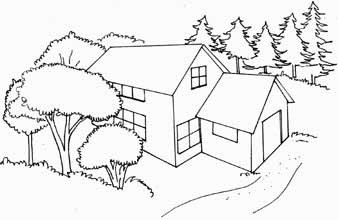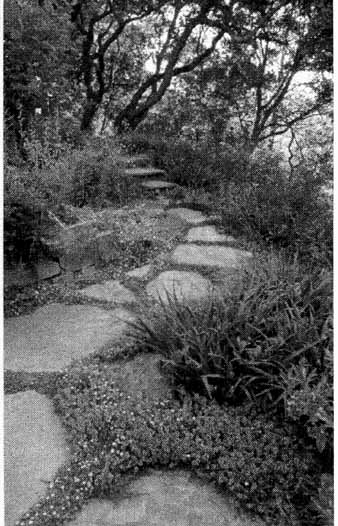$ = cost effectiveness; EE = energy efficiency; RC = resource conservation; HB = health benefit
Design Resource-efficient Landscapes or Gardens - RC
• When you remodel your home, it is a great time to rethink landscaping areas that have been disturbed by construction. Conventional landscapes such as Kentucky bluegrass have high water and chemical inputs and are often over- planted or planted without regard for climate and soil conditions. This results in excess water and fuel consumption, water pollution, and waste generation. Sustainable landscape techniques are in harmony within the local ecosystem and help conserve water, reduce use or chemical fertilizers and pesticides, create healthier soil and plants and increase biodiversity in landscape areas. In a state-of-the-art assessment, it was proven that xeriscapes cost half as much as standard irrigated landscapes and could almost eliminate water use in drought-prone yards.
• Recommendation: Xeriscape and use native plants when you re landscape after remodeling.
What is xeriscaping?
Xeriscaping is landscaping that minimizes water demand. It is based on intelligent planning and design, proper soil preparation, use of drought-tolerant plants reductions in the amount of lawn space dedicated to grass, water harvesting (diverting rainwater to plants), efficient irrigation design and mulching to reduce water loss from the soil. Many xeriscapes include beautiful flowers, shrubs, and trees.
Landscape to Block Winds - EE
• Older homes exchange all of the inside air with outside air as often as once or twice per hour, whereas new homes average about half an air change per hour. The older and leakier your home, the more important t is to reduce the wind velocity to save energy and heating costs. A mature windbreak comprised of several rows of tall evergreens can reduce wind velocity by up to o percent.” According to a 2001 report at Virginia Tech, a 50 percent wind reduction can reduce heating fuel consumption 20 to 40 percent in leaky homes. Even in calmer areas, wind barriers can reduce fuel use by 10 percent or more.
• Recommendation: The most effective windbreaks are trees or shrubs that have low crowns and dense foliage; as they grow, they will block winds even better. Windbreak tree placement varies with location, but typically means placing them on the north, northeast, or northwest facades.
Use Landscaping to Shade Windows - EE
• Refer to “Use Landscaping to Shade Windows” in the Passive Solar Energy section of this web site.
Install Drip Irrigation - RC
Water sprinklers waste significant amounts of water through evaporation. They exacerbate water runoff and often result in over-spray onto windows, walks, and streets. When you replace these traditional sprinkler systems with drip irrigation systems, which deliver precise amounts of water slowly and evenly at the plant’s roots where the plant uptakes water, you reduce the water waste and weeds, and leaf burn caused by sunlight on moist leaves.
Recommendation: Replace standard sprinkler systems with drip irrigation systems for all residential applications except turf.

Using landscaping to shield against the elements: trees
close to the house on east and west aspects protect against summer
sun; 2. trees on the south aspect should be deciduous to permit winter
sun while shielding summer sun; 3. coniferous wind breaks protect house
from cold winter winds.

Replenish groundwater with attractive permeable pavements
Prev: Reduce Construction Waste
Next: Minimize Storm Water Run-off